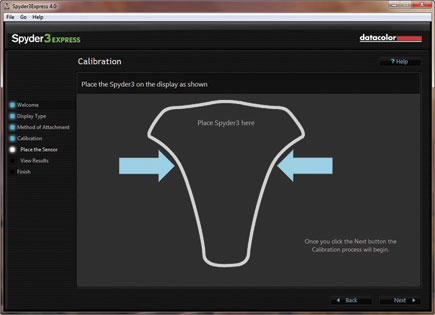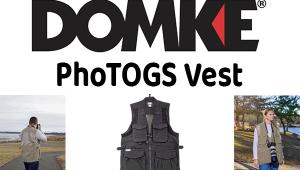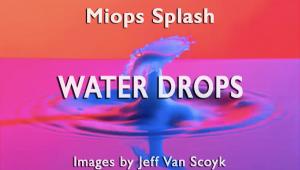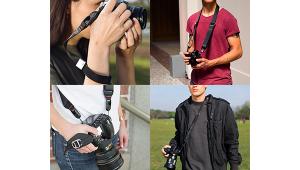Datacolor’s Spyder3Express And Spyder3Studio SR; Calibration Or Calibration & Profiles Plus
“The Spyder3Express is the latest incarnation of Datacolor’s monitor calibration hardware. It does one thing—calibrate your display—and does it well.”
Some of us are controls freaks—we want total control over what adjustments are made to our systems, and to have the ability to tweak each setting until we have what we feel is the perfect solution. Others are more practical, and just want good results with a minimum amount of time or effort. Which approach is right? Both of course, and that’s why it’s nice to have options.
Datacolor is happy to oblige both types of people with their new products, the Spyder3Express, for the non-tweaker, and the Spyder3Studio SR for those of us who go all out. The Spyder3Express is the latest incarnation of Datacolor’s monitor calibration hardware. It does one thing—calibrate your display—and does it well. On the other hand, the Spyder3Studio SR takes care of both monitor and printer calibration and supports calibration of digital projectors.
Spyder3Express
The Spyder3Express (#1) is the most basic of the monitor calibration choices offered by Datacolor. Also available is the Spyder3Pro and Spyder3Elite (the Elite is included with the Studio SR package). A significant upgrade from the previous Spyder2, the new model is both faster at calibrating and more accurate. At only $89, it’s a cost-effective way to improve your imaging quality, particularly if you print or share images online—you know in advance what the images will look like.
 |
|
|
Using the Spyder3Express really couldn’t be much easier. A simple installation of the software is followed by plugging in the device to an available USB port. Both Macintosh and Windows systems are supported, and for this review I used Windows 7 64-bit. The installer will place a shortcut onto the task bar (Windows) or menu bar (Mac), making it easy to launch and use the software.
The first screen (#2) asks you to verify a few options, including monitor warm-up time (ideally, you should have your monitor on for at least half an hour to stabilize prior to calibrating the display), lighting conditions (try to calibrate in the lighting conditions you normally work in), and whether the monitor settings have been set appropriately.
 |
|
|
The only other decision you need to make is selecting the appropriate monitor type—LCD/Laptop or CRT (#3). Once you click Next, the software will show you where to place the Spyder3 on the screen (#4), and then begin the measuring process (#5). Measuring the color patches takes about 5 minutes—faster than the previous version by about 30 percent.
 |
|
|
 |
|
|
 |
|
|
Although you don’t have options for different settings during the calibration, the Spyder3Express uses the standard settings for photographic work—a Gamma of 2.2 with a White Point of 6500K. These will give you the best results when editing digital photos.
Once completed, the software shows you a screen with the adjusted settings. By clicking on the Switch button, you can quickly compare the before and after settings. I calibrated my display initially with a Spyder2 to see how much difference there was between the two devices. As you can see in #6 and #7, the Spyder3 rendered a warmer tone with better shadow detail than the older device.
 |
|
|
 |
|
|
Because monitors change over time, just calibrating and forgetting isn’t the best way to ensure consistent results. Spyder3Express helps here with an automatic recalibration. Selecting Preferences from the software will let you set how often you should be reminded to recalibrate your display (#8).
 |
|
|
Spyder3Studio SR
So, you might be wondering, if the Spyder3Express does such a good job, why would I want to spend more for the Pro or Elite models. Along with those tweaking comments made earlier, the more advanced models add the ability to calibrate multiple displays and perform ambient light measurements that will automatically adjust your display when changes in lighting are detected. If that sounds like you, and you’re also interested in creating printer profiles for new papers, or fine-tuning your printed output, the Spyder3Studio SR is well worth a look (#9).
 |
|
|
The Studio SR kit includes a colorimeter that is essentially the same as that found in the Express package with more software options and the ambient light checking, and adds in a spectro device for measuring print charts to create ICC profiles for your printer. Also included in the Studio SR kit is the SpyderCube, a useful little device for color balancing and optimizing digital images at capture time.
- Log in or register to post comments

















































